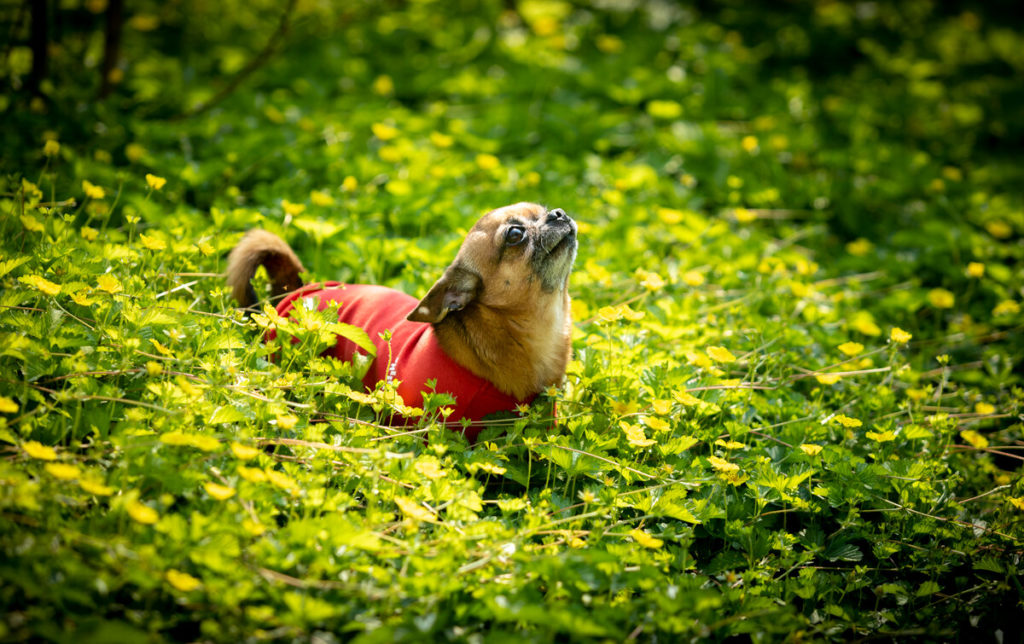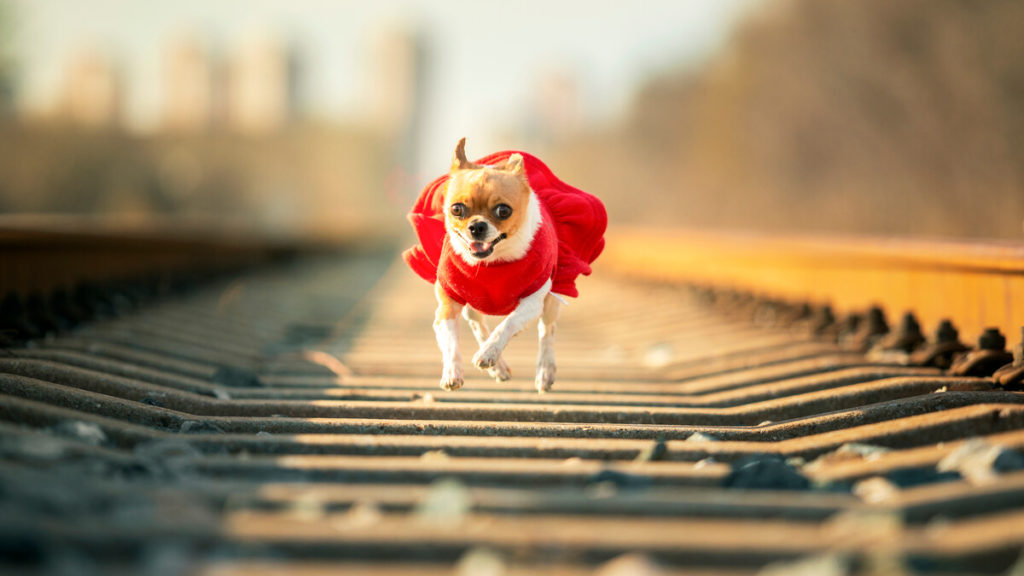Teaching your Pug basic dog commands can be a fun and enriching experience. From sit to stay to come, and more, Pugs are brilliant students and are fully capable of learning all the basics.
Training your Pug, not only teaches them obedience and ensures safety, but it creates a stronger bond between you and your furry family member. Pugs that have had good basic training will experience more comfort and less stress.
When to Start Teaching Basic Commands to Your Pug
Young puppies are very eager to learn and you can start teaching basic Pug commands to your new bundle of joy as soon as he arrives at your house.
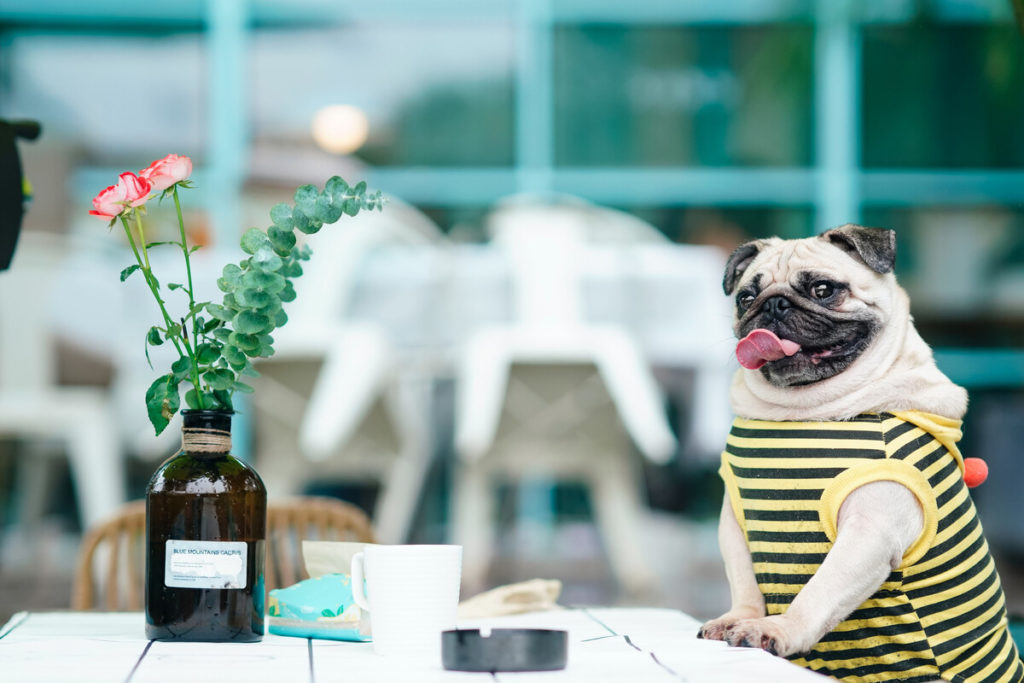
There is no reason to believe in the myth that your puppy must be at least six months old before you can train him. In fact, the younger they are, the easier it is to train them and they will learn much faster. Today, you will get the ins and outs of training your Pug very important, basic commands: sit, lie down, come, stay, and no.
Simple Rules to Know about Training
In order to ensure success and to go about effectively teaching your Pug basic dog commands, it helps you follow the following rules.
- Short Sessions: The training sessions must be short. It is better to have six five-minute sessions per day than one half-hour session. This is to ensure that they’re able to stay focused and successful. This is especially important for puppies.
- Pleasant Moods Only: We all learn (and teach) better when everyone is happy, right? It is highly likely that your session will be more productive if you go into it in a pleasant mood. Not having a good day? No worries, try again tomorrow.
- No Distractions: First, remove all objects that may distract your Pug. Be clear and accurate in what you wish to teach him and choose a calm environment.
Once your pup has learned all commands, then you can choose a more lively place to allow your Pug to execute your orders in different environments.
- Praise and Rewards: Anytime your Pug does anything you want to see repeated, praise and rewards are key to see wanted behaviors. This goes for your training session, too. The session should definitely be accompanied by a reward: a treat, a toy, cuddles, etc. and verbal praise is great, as well.
- Positivity: Make sure to always end the training session with positivity. Have your Pug do an exercise that he can easily perform. This way you always end the session on a positive and victorious note.
We recommend using a good training treat to reward you Pug when he or she successfully completes a task. Zuke’s Natural Training Treats and a high-quality, healthy option.
Basic Pug Training Commands
Here are a few basic commands that you should definitely teach to your Pug:
“Sit!”
Sit is usually the first and foremost command pet owners teach their pups.
- Take a treat and show it to your Pug.
- The Pug is interested and he will follow you with his head to try and get hold of it.
- Hold the treat above your Pug’s head so that he has to look up.
- Hold it behind his snout so that he has to put his head back to get it.
- To grab the treat, your Pug will put his abdomen on the floor.
- The moment he is in a sitting position, give him the treat and verbally praise.
Repeat these steps a few times. After a few attempts, your Pug will understand how he can earn his treat and he will respond by moving faster and faster.
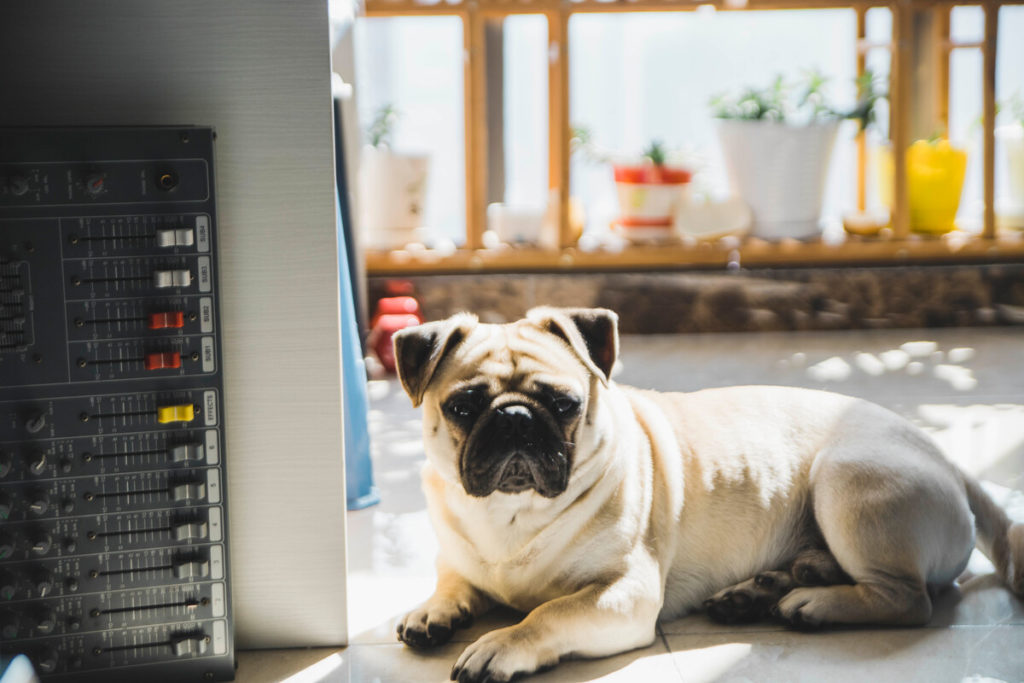
From the moment he clearly understands what you expect from him, say, “sit” when he is sitting, so that he learns to associate this command with the act he must perform.
The goal is to eventually be able to say “sit” and have your Pug comply with no treat necessary. Of course a “good boy!” or good girl!” never hurts.
“Lie Down!”
This command tells your Pug to lie down flat. Don’t confuse your Pug by telling him to “lie down” when he needs to get off the couch! In this case, you choose “down”. Teaching “lie down” is easier after your Pug knows how to sit, as they can typically do this better once sitting.
- Have a treat in hand so that your pup can see it.
- Again, it’s best to teach this if your Pug has learned “sit.” Have your Pug sit.
- With a treat in hand, put your hand on the floor about a foot in front of your pup (enough room for them to lie).
- When your pup lies down, give the treat and lots of praise.
Continue the exercise a few times. When your Pug understands that your hand on the floor means that he must lie down, give the verbal command “lie down” every time he performs this action so that he understands the word and the action correlates.
Again, your Pug will follow the order without needing the treat overtime. It should also be able to “lie down” without sitting first.
“Come!”
Teaching your Pug to come to you when you ask (calling) is probably one of the most important basic Pug commands for him to know and follow. Calling your Pug to you when he is running on could save your sweet baby’s life. You definitely want your Pug to know this command.
“Come!” is also good for having your Pug come back when playing with friends. Puggy playdates are important and can also be taught through training, read on that here.
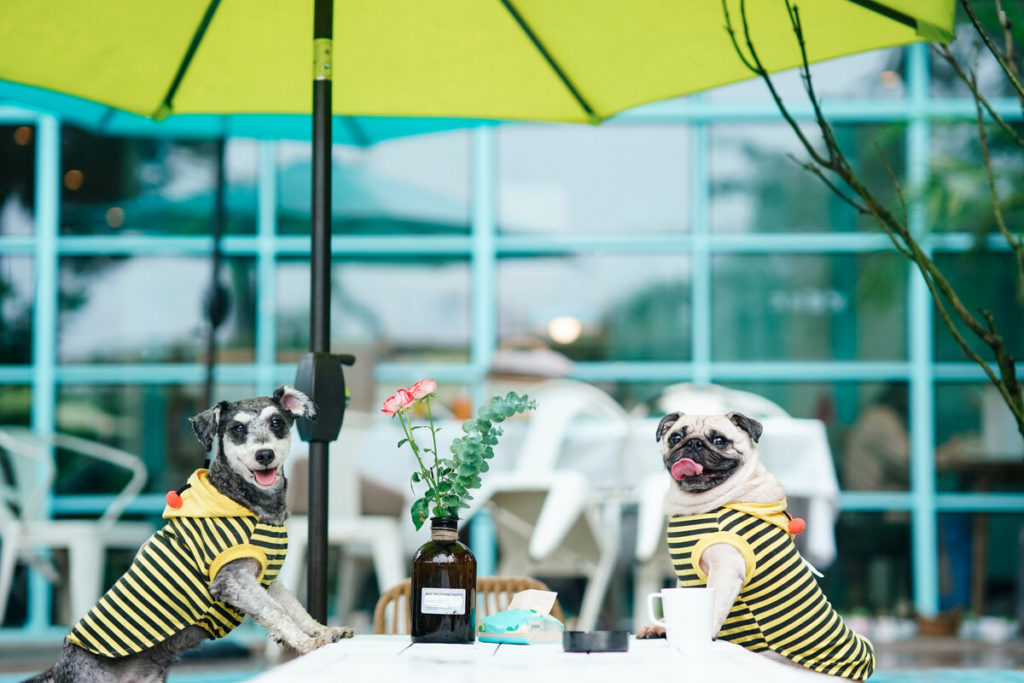
During this training exercise, you will need to be accompanied by a friend or family member.
- Start by asking the person accompanying you to stand and hold your Pug on a leash.
- You will sit a short distance opposite from your Pug and enthusiastically call him to you by calling his name, followed by a “come!”
- As the person walks your pup on the leash towards you, open your arms very wide as if you want to give him a big hug. You want your pup to see you full of joy when they come to you.
- Of course, have a treat ready to give to your accomplished pup.
- This exercise is short but repeat it one or two more times from a further distance.
After you perform this 3-4 times leashed, release the leash and follow the same steps as before except for step 1 which will look like this:
- The person accompanying you to kneel on the floor with your Pug sitting by them. If they need to lightly hold onto their collar, that’ s okay.
*If they pull the collar, this can cause your pup to stress so a gentle hold should be fine.
Then carry on happily calling your pup while saying “come” and rewarding them when they come to you.
For the first 2 or 3 sessions of come training, complete it using the above steps.
After success, start calling him without being able to see you. Play hide and seek in the house or in the yard so that your puppy has to search to find you. Give treats.
Since this command so crucially needs to be followed accurately and quickly every time, practice it a lot and always give rewards and treats. You can practice in your home while you are in another room.
Eventually, provide an outside element that will attract your Pug’s attention. This can be done in your yard or someone else’s (choose a person you know since this is still a training session). Have someone walk by. This person could be a family member or friend. When your pup starts to go their direction, put them to the test and see if they will come when called.
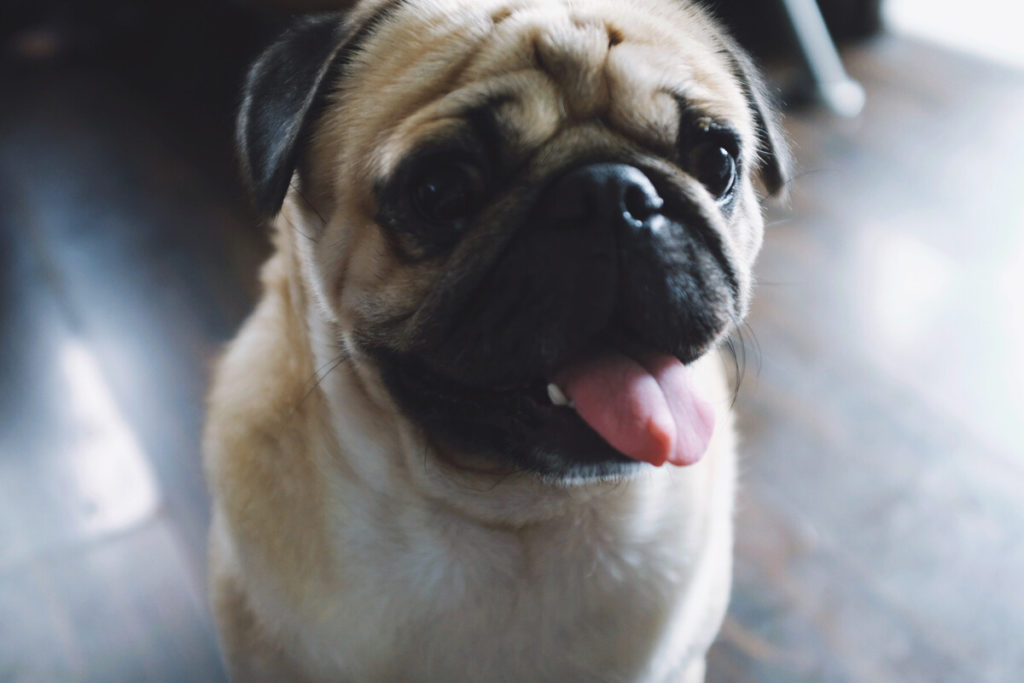
Over time, practice this command so that they don’t forget and that they will remember if there’s ever a crucial time for it (i.e. they runoff in your neighborhood).
*Important Tip: If you ever call your Pug to “come” and they don’t, do not go towards them. For whatever reason, maybe they think they’re in trouble or you’re playing a game, they don’t actually come. Instead, walk away from them while calling their name and saying come. The hope is that they will follow you.
Anytime your Pug doesn’t follow this command, don’t punish them. You want your Pug to always want to come to you. When they eventually do, praise them. If they don’t, once you are able to get a hold of them, don’t punish them. It may be hard, but let it go and do some more practice later.
“Stay!”
“Stay” is often the most difficult exercise to teach a Pug. Like many children, some Pugs just don’t like to stay still sometimes.
However, thanks to a few short and repeated training sessions you should be able to eventually teach this command with full success. It will prove to be useful in many situations, especially if your Pug tries to jump out of the car before you can put his leash on.
It’s helpful to teach “lie down” prior to “stay.”
- A couple treats in hand, start by telling your Pug to “lie down.”
- Stand just in front of your Pug and say, “stay” using a steady voice and place your hand in front of you with your palm facing your Pug (like you are saying to stop).
- Wait only 2-3 seconds and give him the treat to reward him for staying in place. Repeat this exercise a few times with longer wait times.
* When first learning “stay” keep times very short (under 10 seconds) and reduce time if they are not successful.
- Again, tell your Pug to lie down and step back this time while saying “stay.”
- After a few seconds, go to your Pug and give a reward and lots of praise.
- Again, gradually increase the duration that your Pug must remain still and the distance between you and your Pug. But, do not go too hasty.
If your Pug doesn’t listen to the “- stay” command, don’t get angry. If you don’t praise or reward them, this should be clear enough.
After a couple of these sessions, teach “stay” from a sitting position the same way.
Eventually, have your Pug stay while you go out of sight. When your Pug can do this, this is a great success that deserves lots of treats, love, and praise!
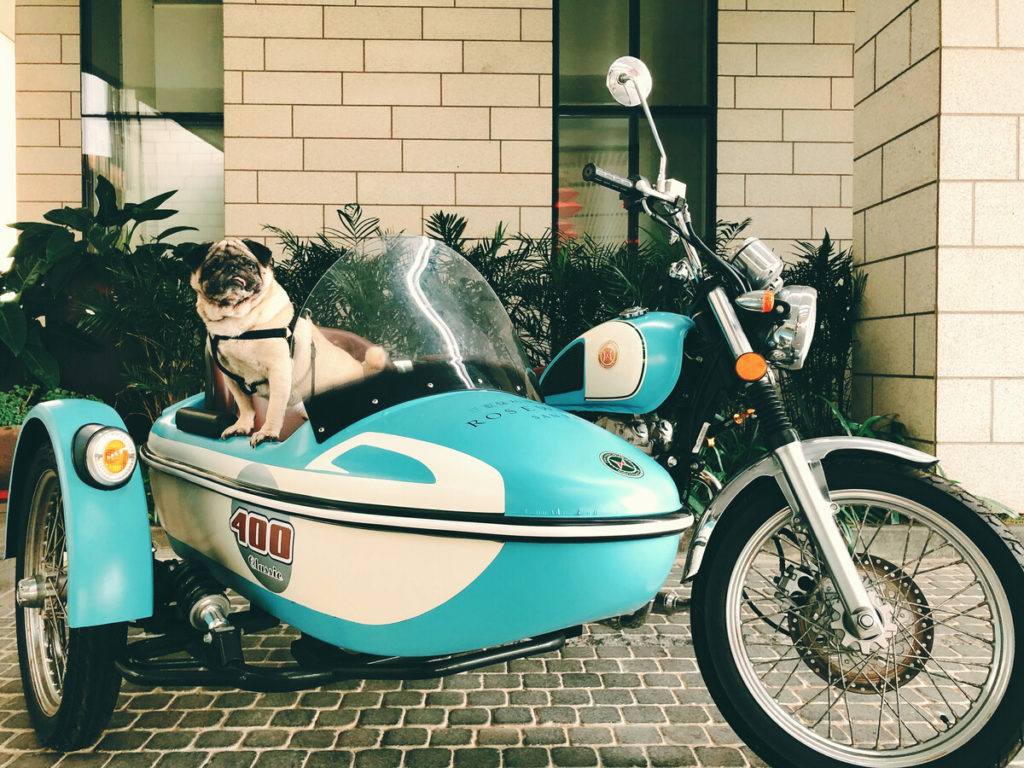
“No!” or “Leave!”
As you’ve read, many exercises payoff if you reward the right behavior and ignore the unwanted ones. Positive reinforcement truly is the best method.
However, it is sometimes necessary to make it clear to your Pug that his behavior is incorrect. This is especially so if your Pug or someone else is in danger.
“No” should only be used when absolutely necessary and shouting at your Pug should always be avoided. You want your Pug to obey without any aggression from your end or their end. Being aggressive with your Pug can result in them eventually being aggressive with you. Because of this, many owners prefer to use “leave” instead of “no.” It’s up to you.
To teach this command, have treats ready. Get your Pug’s attention by telling it to “sit.” Tempt your Pug to do an unwanted behavior (maybe leave a plate with a human’s snack on the ground). As they go towards it, say “leave” or “no” firmly but not loudly. When they look towards you, praise and give treats. Practice for a short time over several training sessions.
An important thing to think about when you want to get your Pug to stop doing something is that they will likely respond best if you give them something else to do like “sit” or “lie down.”
The Disc Method for “No”
For teaching “no” you can also purchase a set of training discs unless your Pug is particularly nervous or if he is frightened by noises. This is a set consisting of five training discs that resemble small cymbals hanging on a key ring.
The idea is to hold the discs in your hand without making a sound and when you want to say “no”, release the keyring that will fall and give the characteristic sound that your Pug never hears in any other circumstances.
To teach him “no” you must remember to always have some treats with you. With this method, you will teach him to associate the sound of the discs with the absence of a reward.
- Place a treat on the floor and ask your Pug to eat it. If your Pug moves forward to eat it, let the discs ring in the palm of your hand. The moment the discs are heard, you take the treat away, but you say nothing. The sound does the work.
- After a few times, your Pug should no longer be surprised by the sound and will make the connection between the sound and the absence of a reward. Eventually, he will anticipate the sound of the discs and will refrain from any attempt to eat the treat. This will likely be disappointing.
- Now switch to another exercise, for example, “sit”, and give him a reward because he has obeyed this order. He will soon no longer feel disappointed.
The goal is for your Pug to learn to understand that when he hears the discs, it is showing behavior that does not get rewarded. Eventually, your pup will no longer think of showing these behaviors and discs are no longer needed.
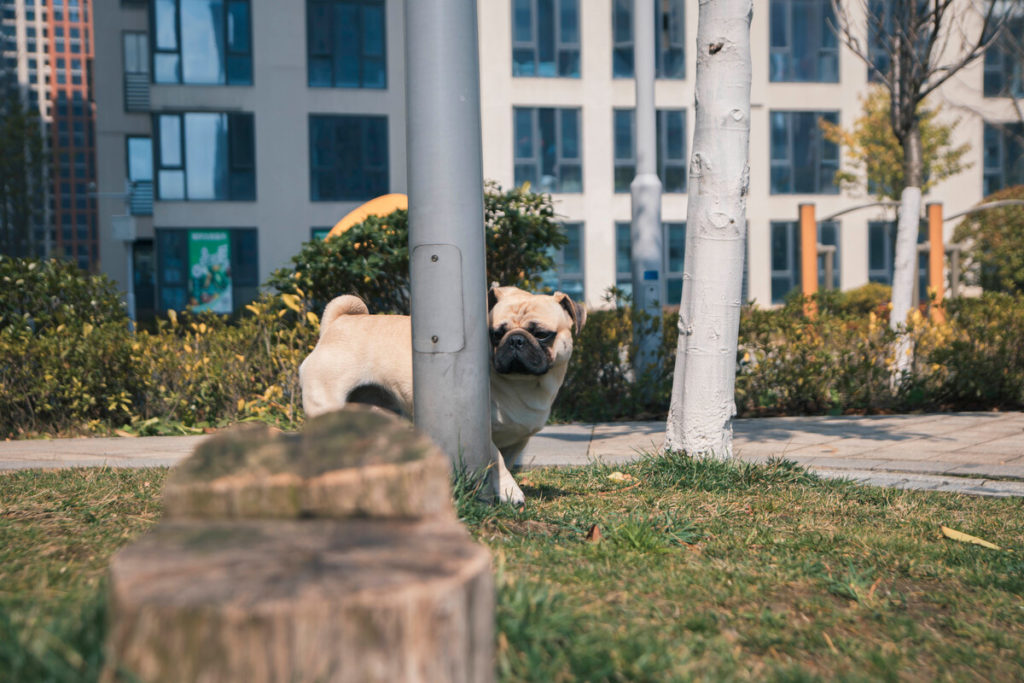
Keep up the Hard Work!
Many Pug owners put in a lot of effort to teach their adored new pup basic dog commands. Once they’ve learned them, the owners pat themselves on the back and congratulate their pup (as they should).
BUT, don’t put in all this hard work for it to be forgotten.
Be consistent with your expectations of your Pug and consistently use the commands for the entirety of their life. Include your family so that they can also use the commands and so that they understand what the expectations are, too.
Don’t forget that if your Pug can follow basic commands, this confirms that they will be kept safe when needed and it builds trust between the two of you.




